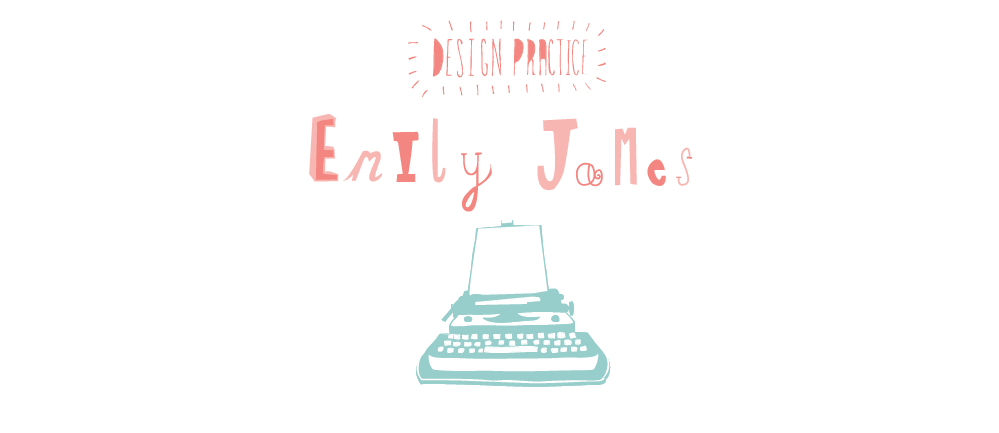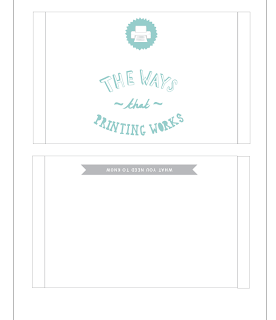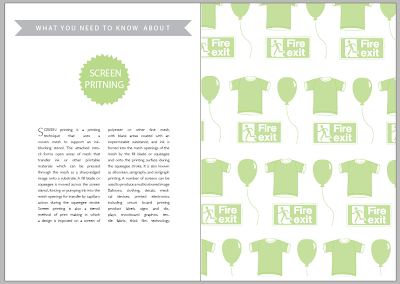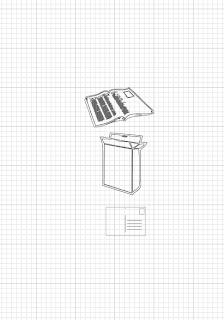1. What
skills have you developed through this module and how effectively do you think
you have applied them?
As this module has been quite long at thorough I feel as
though I have improves my project management skills. At the beginning of the
academic year I felt as though I didn’t do much work but as the projects have
built upon each other I have become focussed and organised on what I need to
do. I have done more hands-on processes, especially in the last brief. This is
something that I have also wanted to do but never left enough time or didn’t
really know to go about doing it. Learning how to screen print as laser cut has
given me the confidence to apply it in future projects.
2. What approaches to/methods of design production have
you developed and how have they informed your design development process?
The approach and perspective of this project has been
different to any one I have done before. I have obviously never made a website
before and very proud of my self for doing so. It is much different than I
imagined and want to improve my understanding of code as I think it is an
impressive skill to have. Obviously being more hands-one gave me a different
perspective of design and taught me that I need to handle my time well to do more
traditional processes.
3. What strengths can you identify in your work and how
have/will you capitalise on these?
I think one my strengths is learning new techniques and
skills. In this module I tried lots of new things, coding a website, laser cutting,
screen printing and foiling. All of theses things are very different. I was
better at some than others but I enjoyed learning and applying every single one
of them. However I think they are skills that I need to keep developing to get
better and quicker at them, so this is something I want to carry on doing.
4. What weaknesses can you identify in your work and how
will you address these in the future?
I feel as though sometimes how my final outcomes and
development are presented lets me down. I think my presentation boards could be
greatly improved and this is something I want to work more on. I’m not very
good at picking out which are the important bits and displaying them in a
professional manner. I think to help me with this I need to improve my photography
skills and get some good pictures of my final outcome. I need to learn to leave
more time at the end of a brief to make finishing touches to presenting my
work. I find that research really lets my blog down; I obviously research as I
go along but never actually put it on my blog until the end so therefore it is
not as in much depth.
5. Identify
five things that you will do differently next time and what do you expect to
gain from doing these?
Next time I will try and make sure I stick to a proper
timescale in terms of balancing out research time and designing time. This will
hopefully give me a more reliable and valid outcome. Also now I have seen a
different approach to a project I can take what I have learned and apply it to
the next one. I think I will experiment more with different outcomes of design
as I really enjoyed the construction side of my products, which isn't something
I often do. Hopefully by doing this I will broaden my knowledge of design and
it will also test my composition and printing skills. Next time I want to do
even more screen-printing, as it will improve the outcome whether it is paper
or fabric. Also, I really enjoy doing something that is away from the computer.
Lastly, I think I would try and do more primary research because I think it is
more beneficial. I would like to take a more practical approach to it and have
something as a creative a response, rather than just writing and images. For
this project I have so many ideas for primary research but because of time management,
I did not get around to doing all of them.
6.How would you grade yourself on the following areas?
Attendance- 5
Punctuality- 4
Motivation- 3
Commitment- 4
Quantity of work produced- 3
Quality of work produced- 3
Contribution to the group- 3








































































